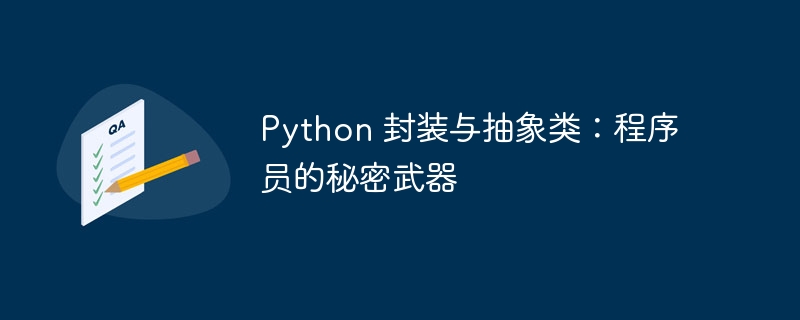

Encapsulation and abstract classes are key concepts inpythonObject-oriented programming(OOP), givingDevelopers' ability to build scalable, maintainable, and reusable code. This article delves into these concepts and reveals their powerful role insoftware development.
EncapsulationEncapsulation is a practice of hiding implementation details and only exposing the necessary information for classes and objects. By using access modifiers such as public, protected, and private, you can control access to properties and methods, making your code more
safeand maintainable.
Advantage
Abstract class is a class that only declares method signatures without providing implementation. They are used to define interfaces that force all subclasses to implement these methods. Abstract methods are declared using the keyword
@abstractmethod.
Advantage
Encapsulation and abstract classes work together to create modular, extensible, and maintainable code.
Encapsulation hides implementation details, while abstract classes define interfaces. This allows subclasses to inherit the interface and provide their own implementation while still ensuring consistent behavior.
ExampleConsider a sample code for managing animals:
class Animal: def __init__(self, name): self.__name = name def get_name(self): return self.__name class Cat(Animal): def make_sound(self): return "Meow" class Dog(Animal): def make_sound(self): return "Woof"
Here,
is an abstract class that defines theget_namemethod but does not provide an implementation.CatandDoginheritAnimaland implement their respectivemake_soundmethods.By encapsulating properties (
) and enforcing abstract methods (make_sound), this code achieves a modular, extensible, and maintainable design.
Encapsulation and abstract classes arePython's powerfultoolsfor OOP, enabling developers to build scalable, maintainable, and reusable code. They improve code quality and ease of use by hiding implementation details, enforcing consistency, and promoting decoupling. Mastering these concepts is critical for any Python programmer who wishes to create robust, efficient software solutions.
The above is the detailed content of Python Encapsulation and Abstract Classes: A Programmer's Secret Weapon. For more information, please follow other related articles on the PHP Chinese website!




